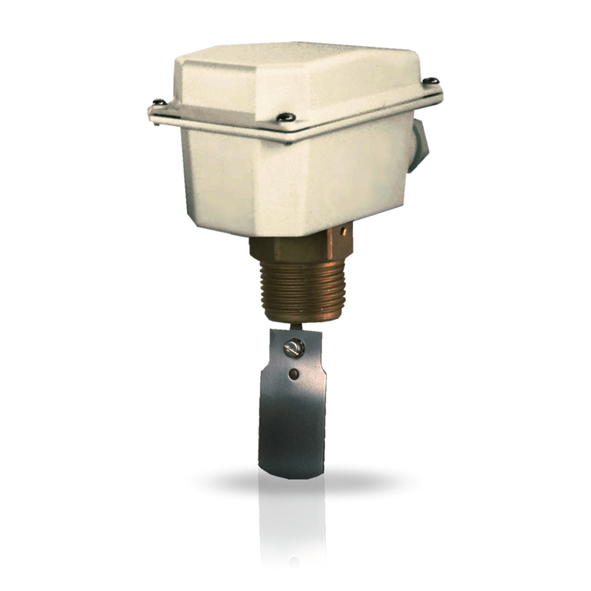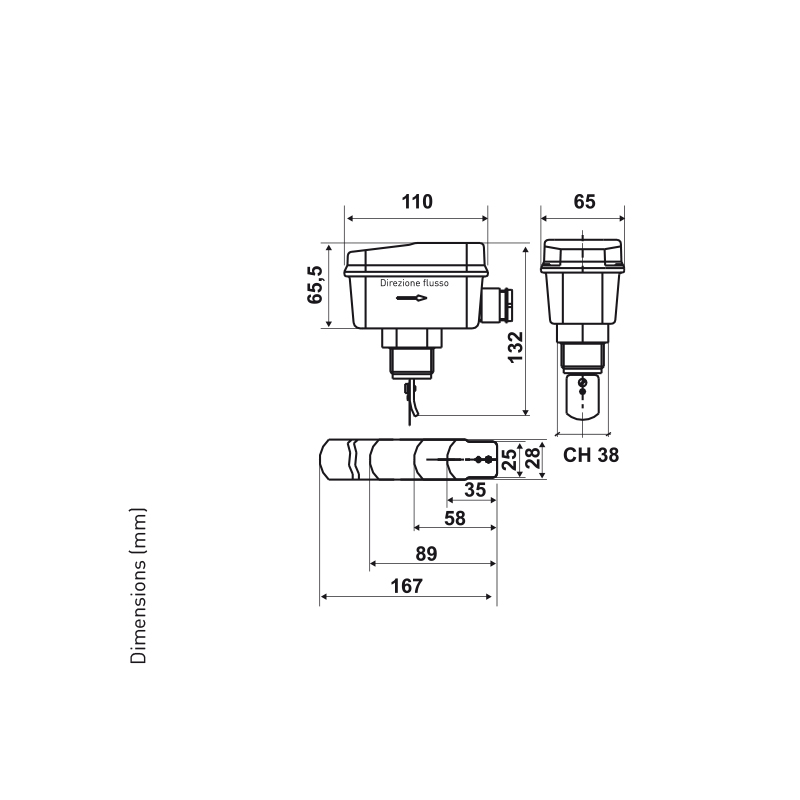Liquid flow switches for liquids with plastic casing and stainless steel paddle
-
DESCRIPTION
General features0
FF82 flow switch controls the liquid flow in piping for cooling and heating systems.
- Working temperature -20 ÷ 110°C.
- Ambient temperature 50°C.
- Max pressure 10 bar.
- Blade in stainless steel AISI 301 for pipes from G1” to G8”.
- G1” connection.
- Sealed cable glande PG16.
- Flow rates see TECHNICAL SPECIFICATION.
- Female 6,3 mm electrical connection.
- Ground connection.
- Protection degree IP65.
- Antishock thermoplastic material casing.
Electric features- SPDT microswitch, dustproof, compliant with UL cUL CSA ENEC
- Rated insulation voltage Ui 380V~
- Continuous duty rated current Ith 10A
-
ADVANTAGES
0
FF82 flow switch controls the liquid flow in piping for cooling and heating systems.
Advantages -
TECHNICAL SPECIFICATION
CODE PIPE DIAMETER BLADE LENGHT mm MINIMUM CALIBRATION VALUE (m³/h) WITH FLOW INCREASING MINIMUM CALIBRATION VALUE (m³/h) WITH FLOW DECREASING MAXIMUM CALIBRATION VALUE (m³/h) WITH FLOW INCREASING MAXIMUM CALIBRATION VALUE (m³/h) WITH FLOW DECREASING FF82 G 1 35 1 0.5 2 1.9 G 1 1/4 35 1.2 0.7 2.9 2.7 G 1 1/2 58 1.6 1 3.9 3.6 G 2 58 2.9 2.1 6.1 5.7 G 2 1/2 89 4 2.7 7 6.5 G 3 89 6.1 4.3 11.4 10.7 G 4 89 14.7 11.3 28.9 27.6 * 167 7.9 6.1 18.4 17.3 G 5 89 28.3 22.8 55.5 53 * 167 12.8 9.2 26.7 25 G 6 89 43 35.8 85 81.6 * 167 16.8 12.2 32.5 30.5 G 8 89 85 72.4 172.3 165.5 * 167 46.4 38.5 94 90.7 * These values are obtained adding the longest paddle -
HOMOLOGATION AND INSTALLATION
Homologation
- Complies with EN 60947-5-1.
Installation and use- FF82 flow switch has to be installed on horizontal pipe sections, far from valves, pipe elbows, outlets or irregular flows.
- A flexible paddle, urged by the flow, operates on the actuation lever of a SPDT micro switch.
- In heating systems with closed expansion duct where the circulation is assured by electro pumps, the heat input has to be automatically interrupted in case the circulation pumps are stopped.
- When the flow is rising: it opens the C-NC contact and closes the C-NO contact.
- When the flow is dropping: it closes the C-NC contact and opens the C-NO contact.
- TECHNICAL LITERATURE
-
FAQS






